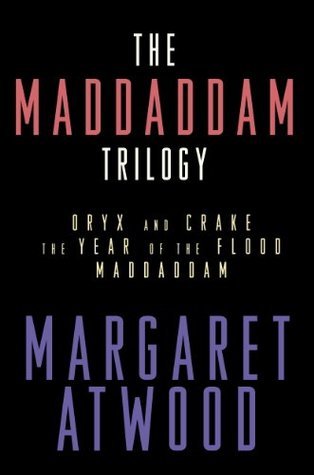What do you think?
Rate this book


1497 pages, Kindle Edition
First published August 27, 2013
I listened to all three books on Audible and I am SURE the audio version, especially of the Year of the Flood, was better than the written version. ***This review contains spoilers.***
I LOVE this series and was very sad to finish it!! I wanted it to keep going. It’s a dystopian story of the very near future. Some of it is quite frightening because it’s easy to believe how our current world could evolve into such a place.
I read Oryx & Crake without realizing it was a trilogy and was super angry at the lack of an ending. I loved the book overall but couldn’t believe the book was truly over. I immediately searched online for what others were saying and happily started The Year of the Flood within a few minutes.
I would score each book at or over 4 stars…but The Year of the Flood is my favorite, even with the “cheesy” songs. I highly recommend listening instead of reading…and don’t skip the songs. It was a complete shock for me when the first song started and I laughed out loud. But, its true…the singing adds to the story…enjoy them.
Although I’d score it around 4 stars, MaddAddam was my least favorite. I wanted the core story and was bored through most of Zeb’s backstory (half the book but thankfully its spread out instead of one big chunk).
I hate ending this review on a negative so don’t let that last comment hold too much weight. This is a wonderfully engaging and well written story. I recommend these three! Enjoy…